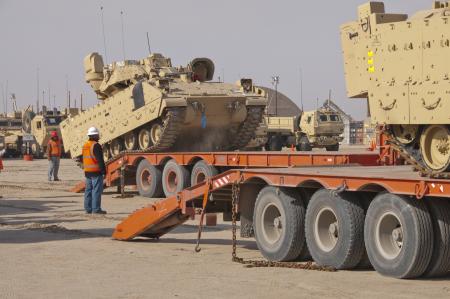Understanding Factors that Go Into LTL Shipping
What Makes a Great Long-Haul Trucking Route?
June 17, 2016
What Refrigerated Trucking Does for You
August 15, 2016Whether you are a retailer who ships small loads to stores throughout the country, an online seller with small packages to distribute to customers across the U.S., a construction firm shipping equipment to worksites, or a manufacturer who needs to transport loads of all shapes and sizes to your retailers, chances are you will encounter a time when you need to ship less than a full load.
These shipments are called less-than-load (LTL) freight, and they have some factors that are influencing whether or not companies are able to get the best shipping rates. Of course, freight companies still like it when you ship a full load, since it’s easy for them to quote and calculate your pricing, but the number of LTL shipments is increasing steadily. Without a good understand of what goes into these shipping costs, though, you could be getting ripped off.
Factors that Go Into LTL Cost Equations
There are a myriad of factors that can influence the total cost of your shipment, but generally LTL shipments are calculated based on these five factors:
- The Pricing Model: technology today allows for a shipper to scan your pallet and identify the dimensions for accurate and immediate pricing. This dimensional pricing model has replaced the old freight classification system, and it could be a better choice since your pallet compresses the size of a shipment and would make it cheaper to ship this way. Ultimately as more and more shippers move toward dimensional pricing models, customers will be forced to compress their packages to the smallest possible size to save money, which is good for shipping.
- Available Space: today there are millions of businesses out there, and many do not operate as traditional brick-and-mortar shops. With unlimited access to information online, these small businesses can easily coordinate LTL shipments that meet their needs, but that demand for space means that shippers and logistics companies have far less available space for your load. As the demand increases, prices for that space are likely to increase along with it.
- Customer Demands: as the speed of global commerce increases, customers who are sending shipments all over the U.S. demand speed, which means that trucks are traveling more and more often at less-than-load capacity. Many companies are now willing to pay a premium for faster service, which means that shippers can and will increase their prices to meet the demands for speed. Companies like Amazon have also created a standard, which means customers expect you to be able to meet or beat free two-day shipping on virtually any item in the world. It’s a tough standard to keep up with, and it’s driving LTL rates up.
- Driver Compensation: there is a shortage of drivers in today’s economy, and along with the simultaneous increase in demand for fast and frequent shipments, this can push prices up for shippers who want to send packages with the smaller number of drivers who are out on the roads. Today’s truck drivers expect to earn a competitive wave, but in this environment that often means the costs of higher wages are passed along to the customers.
- The Risk: one benefit of LTL loads is that the risk of shipping these items is lower than that of a full truckload. With smaller loads, insurance rates and deductibles go down. This allows small and medium-size businesses to leverage LTL loads for a dynamic and cost-effective way to get their products delivered from one place to the next. The key is finding shipments that strike a balance between being small enough to reduce the risk of complete ruin if something goes wrong, and shipments being large enough to be practical for delivery.
If your company is working with LTL shipments, find out how to get the best rates from the highly rated shipping experts at West Coast Carriers.




